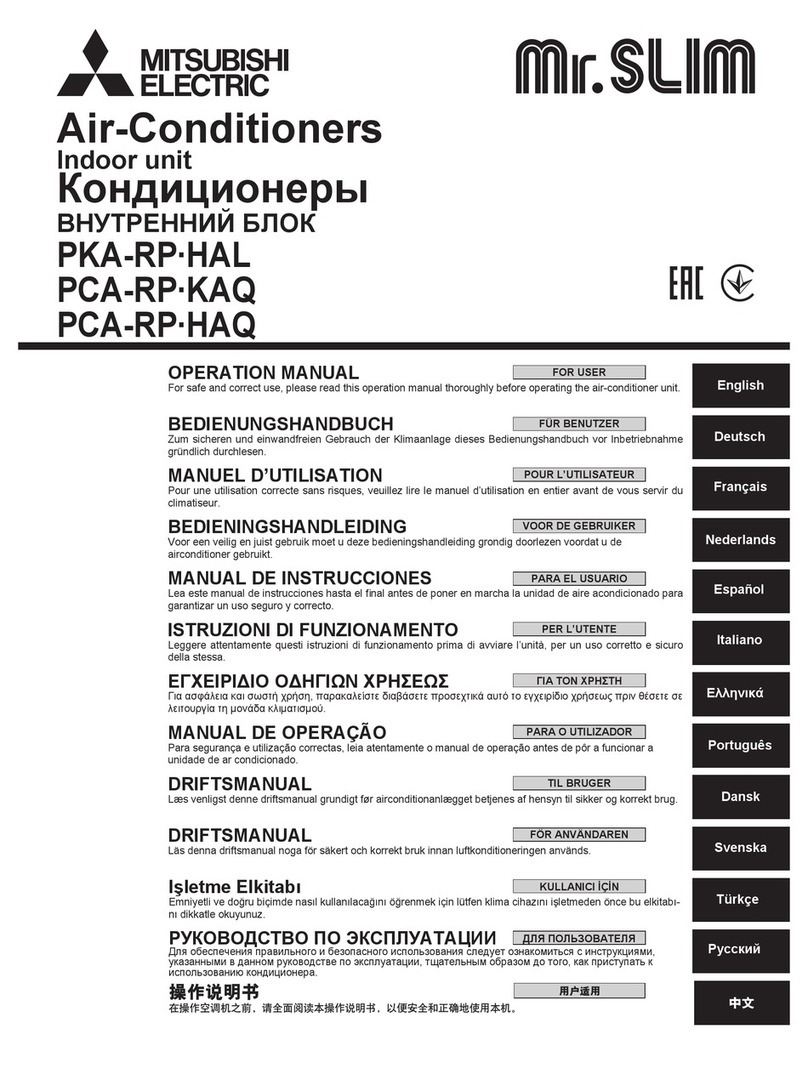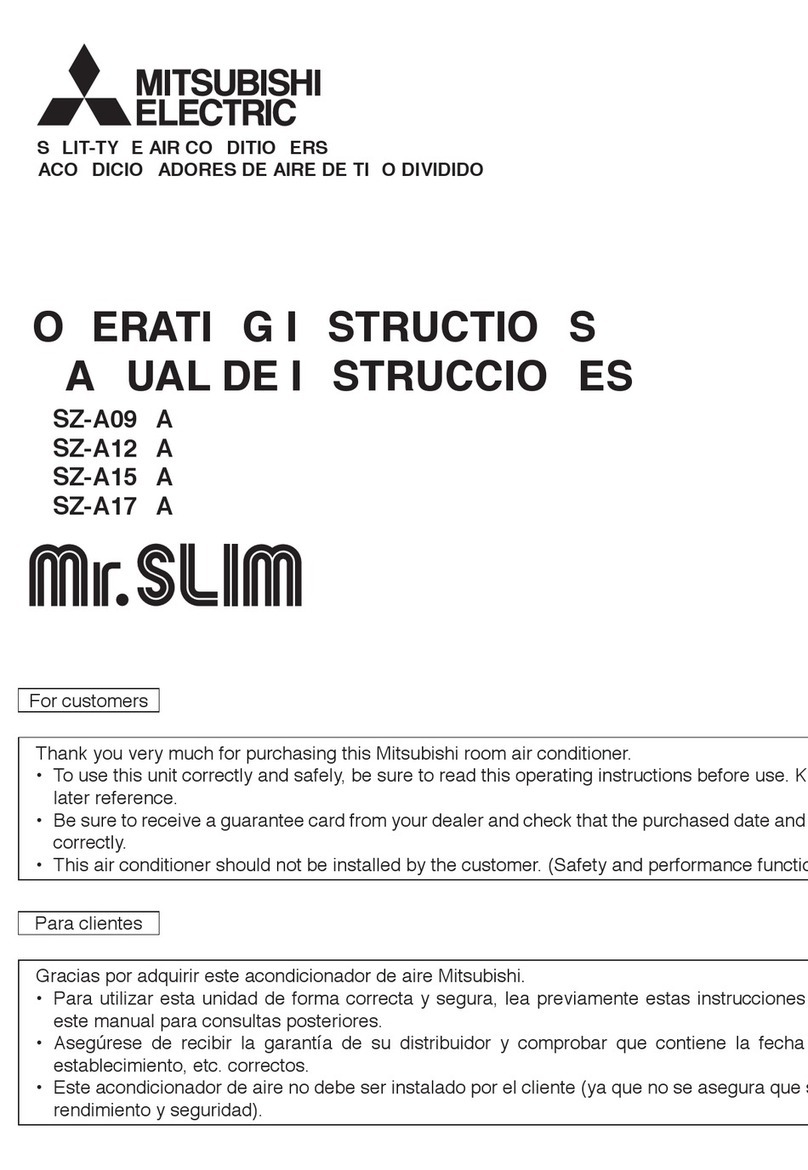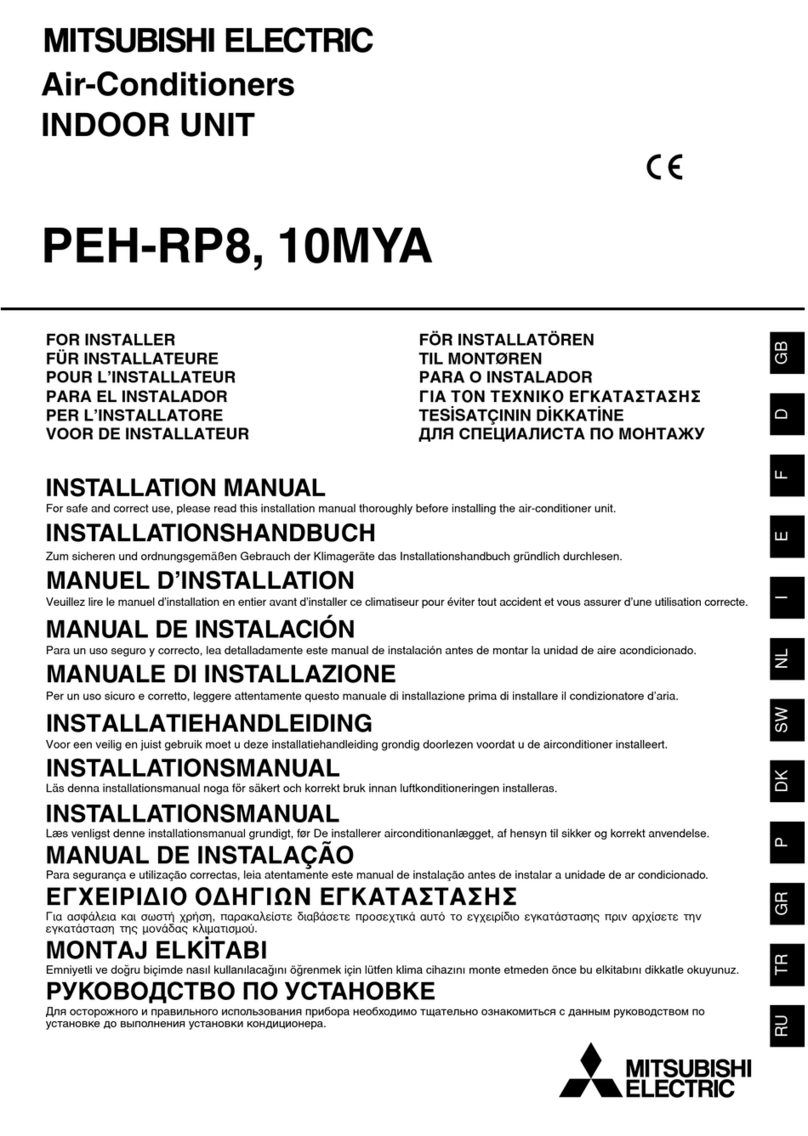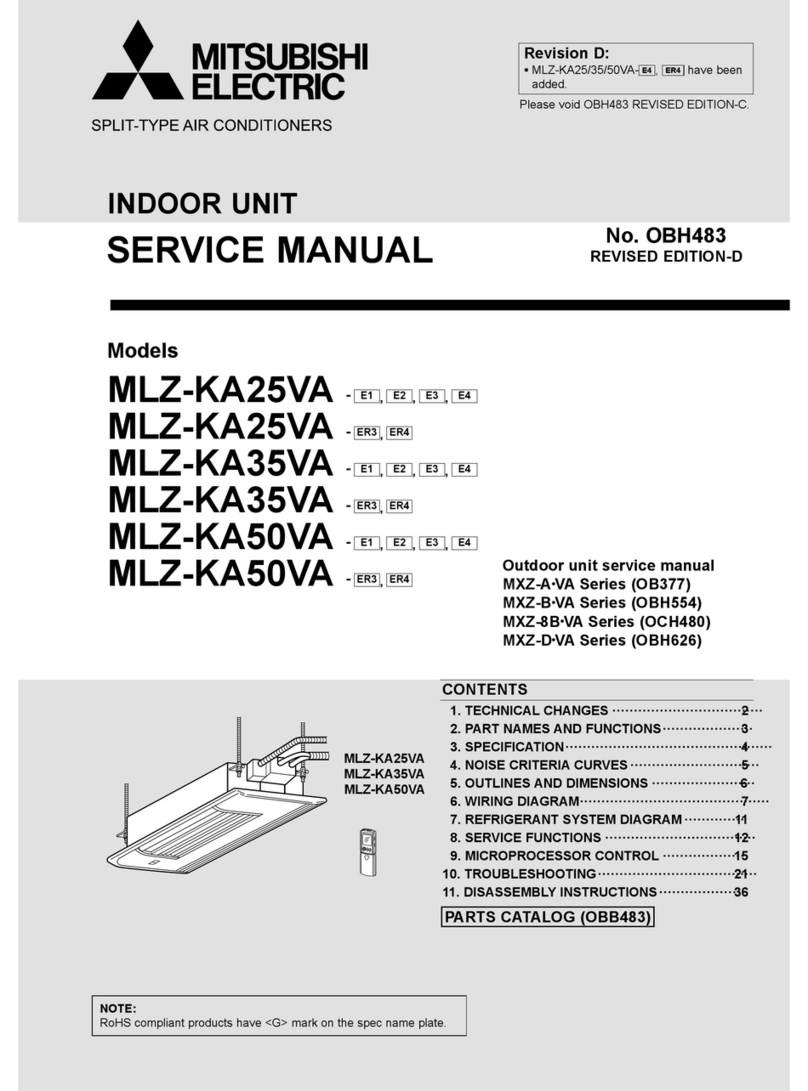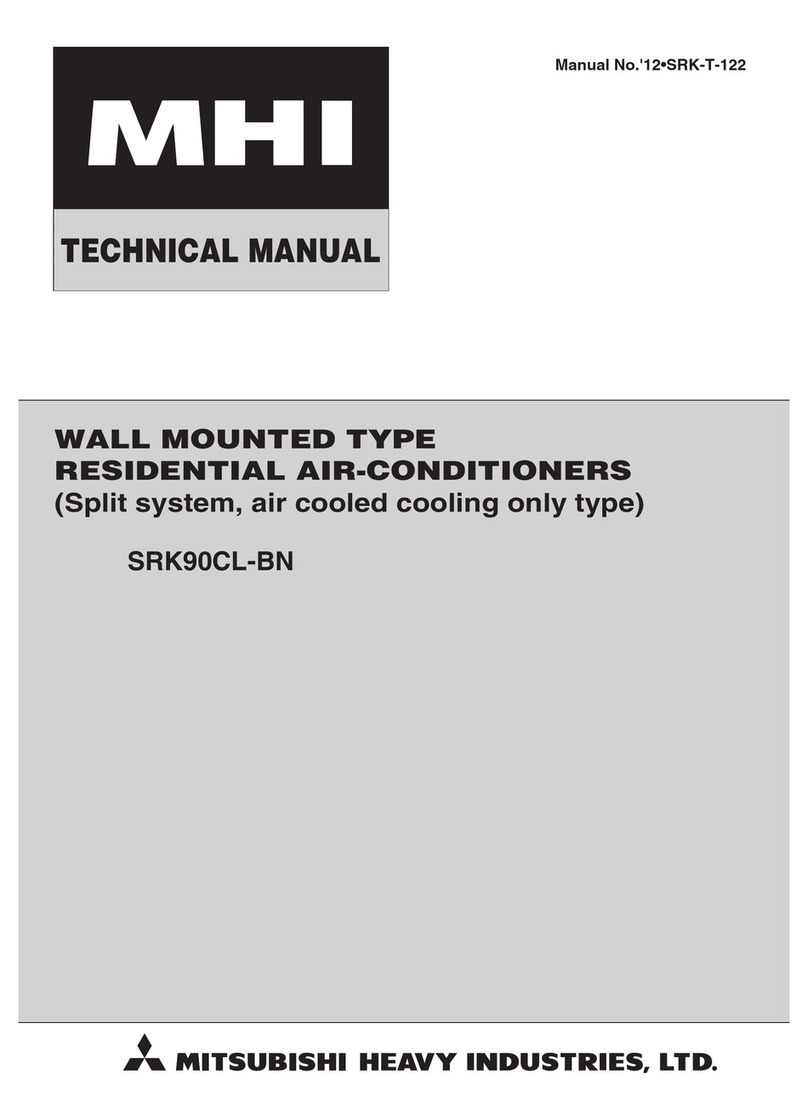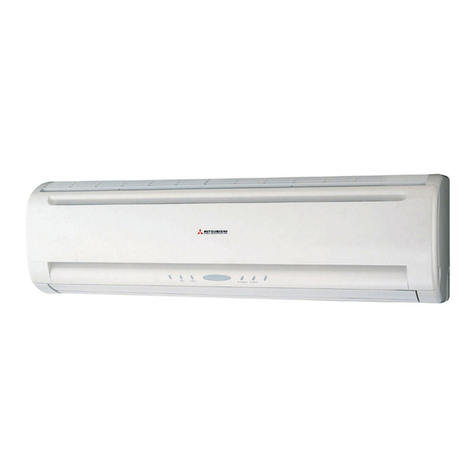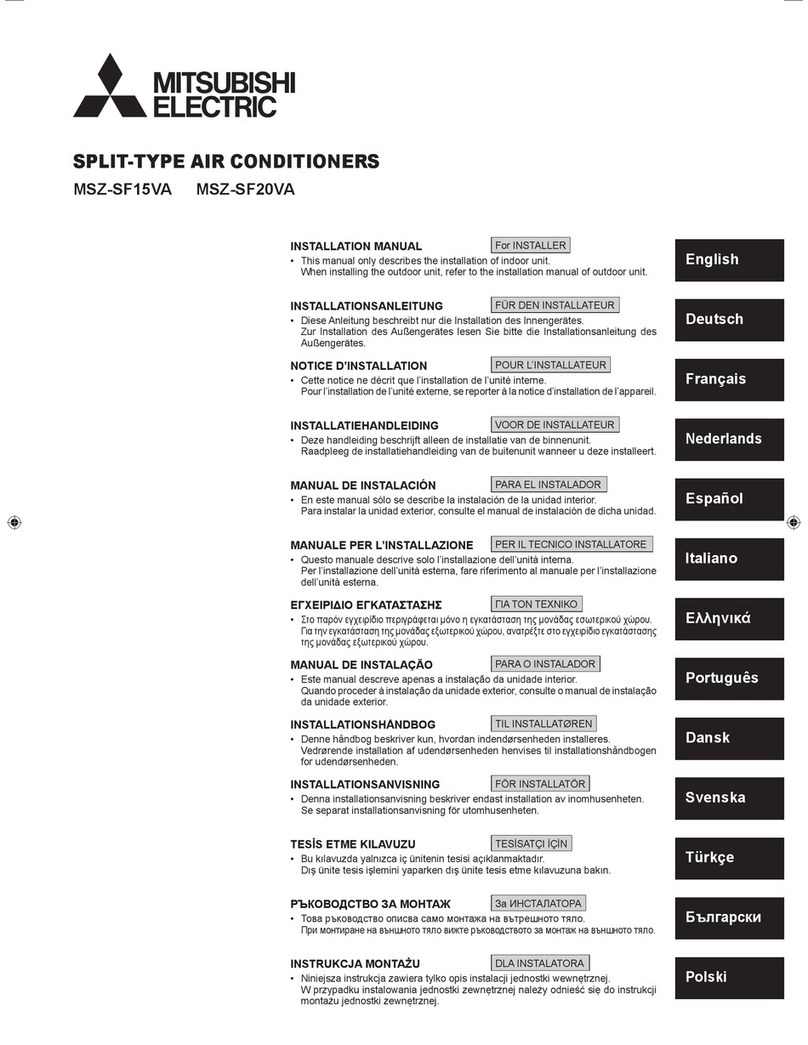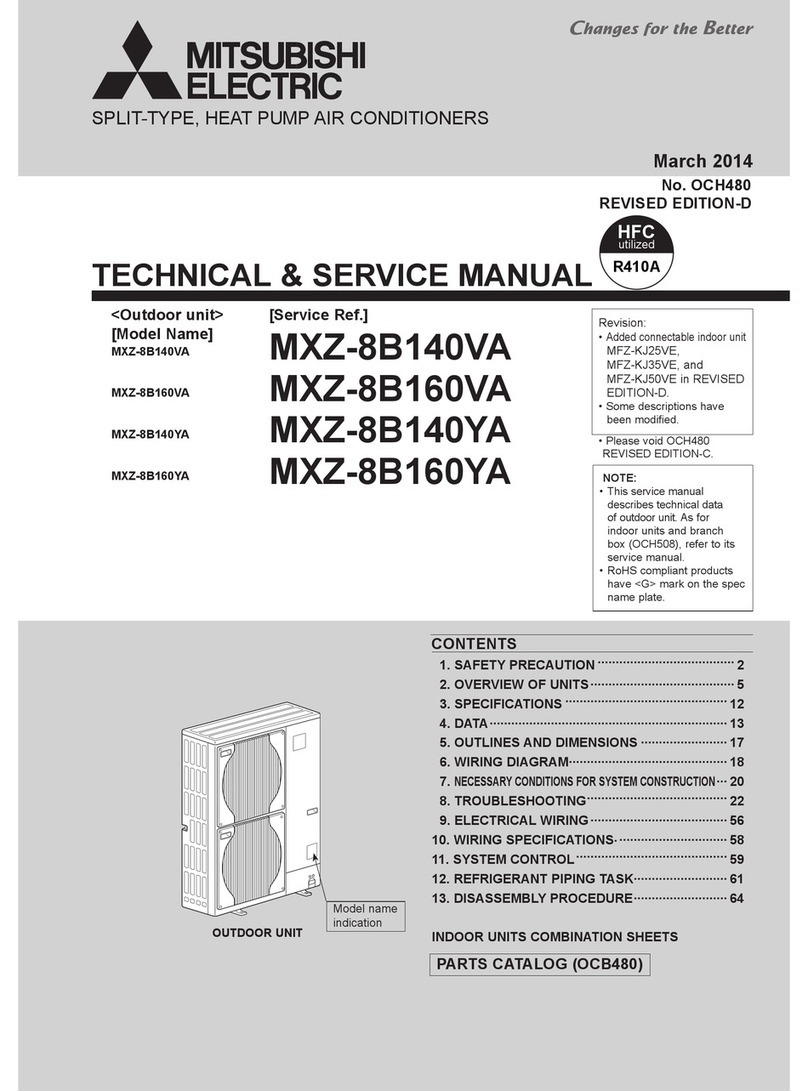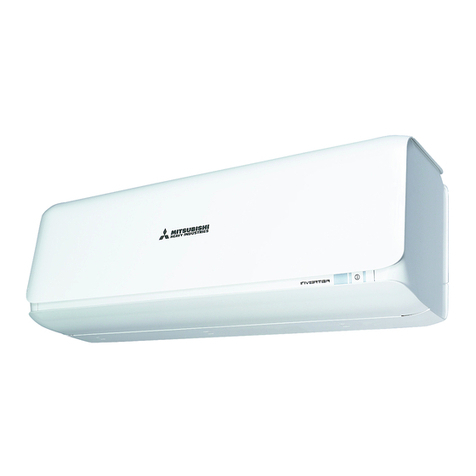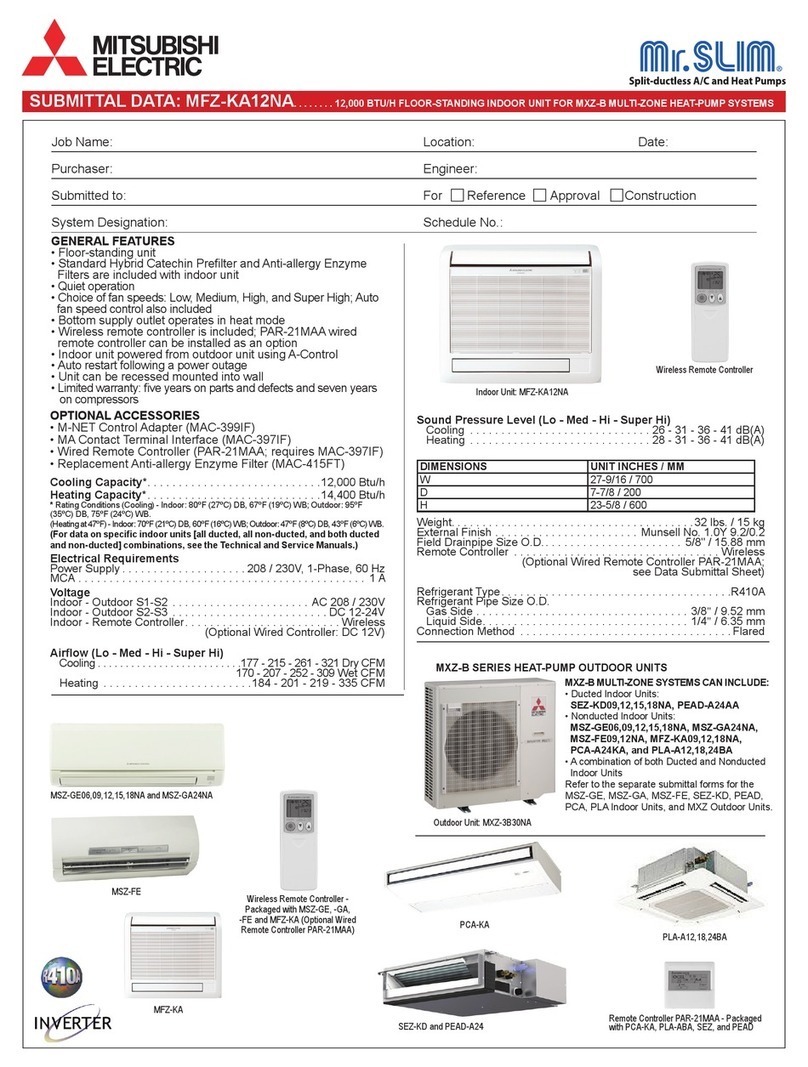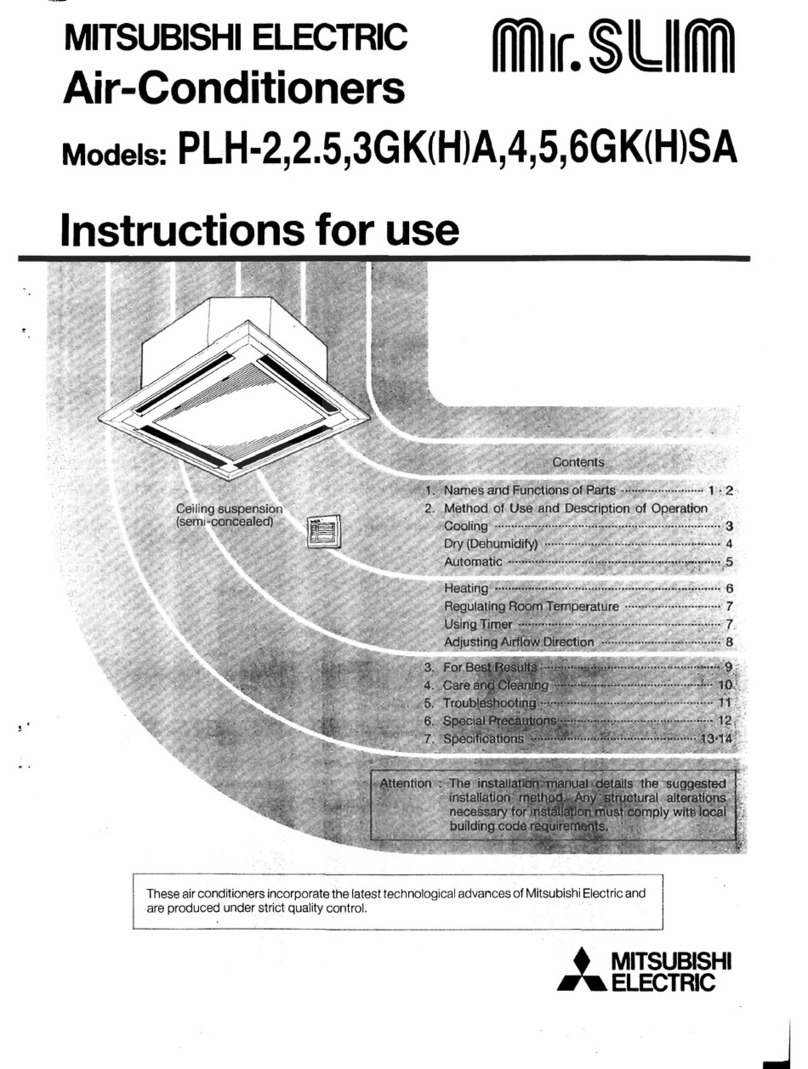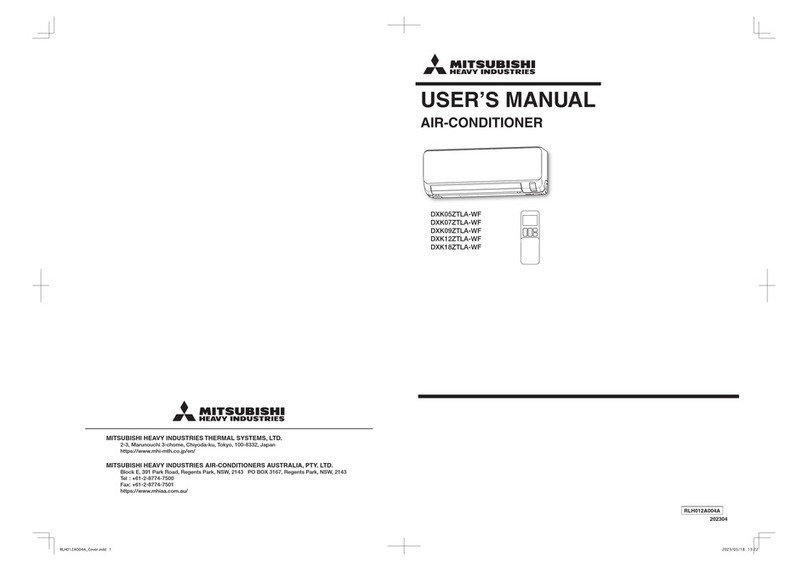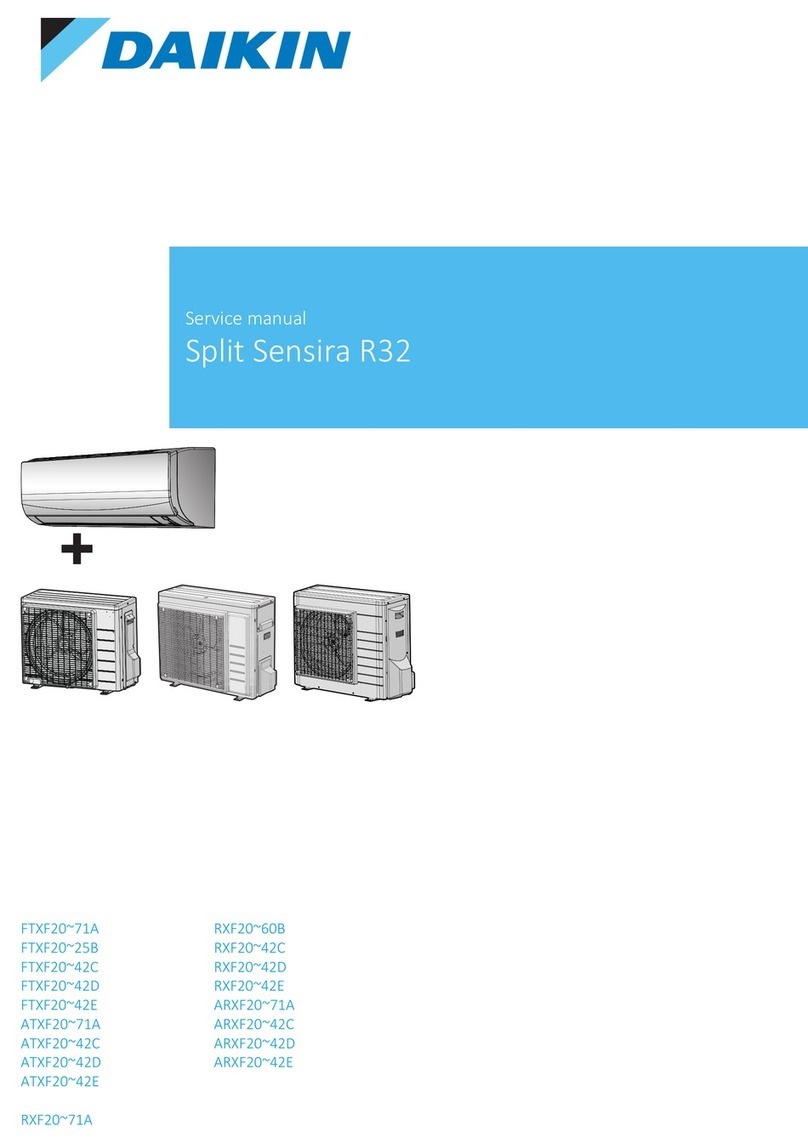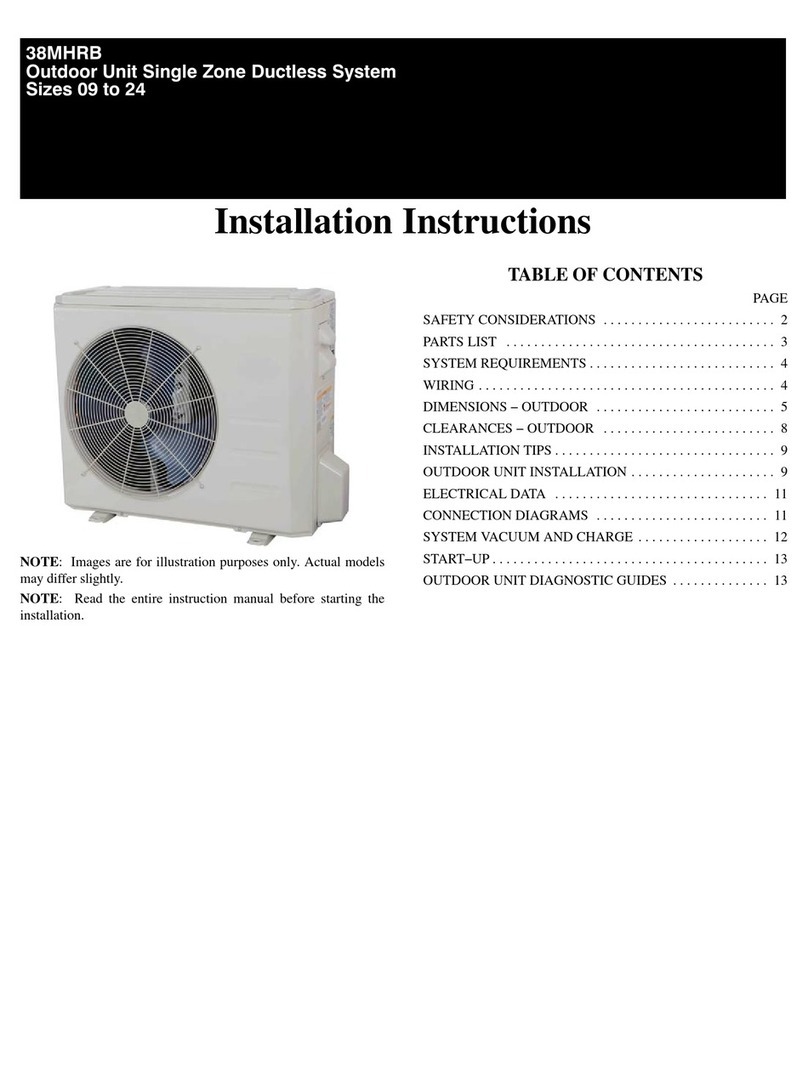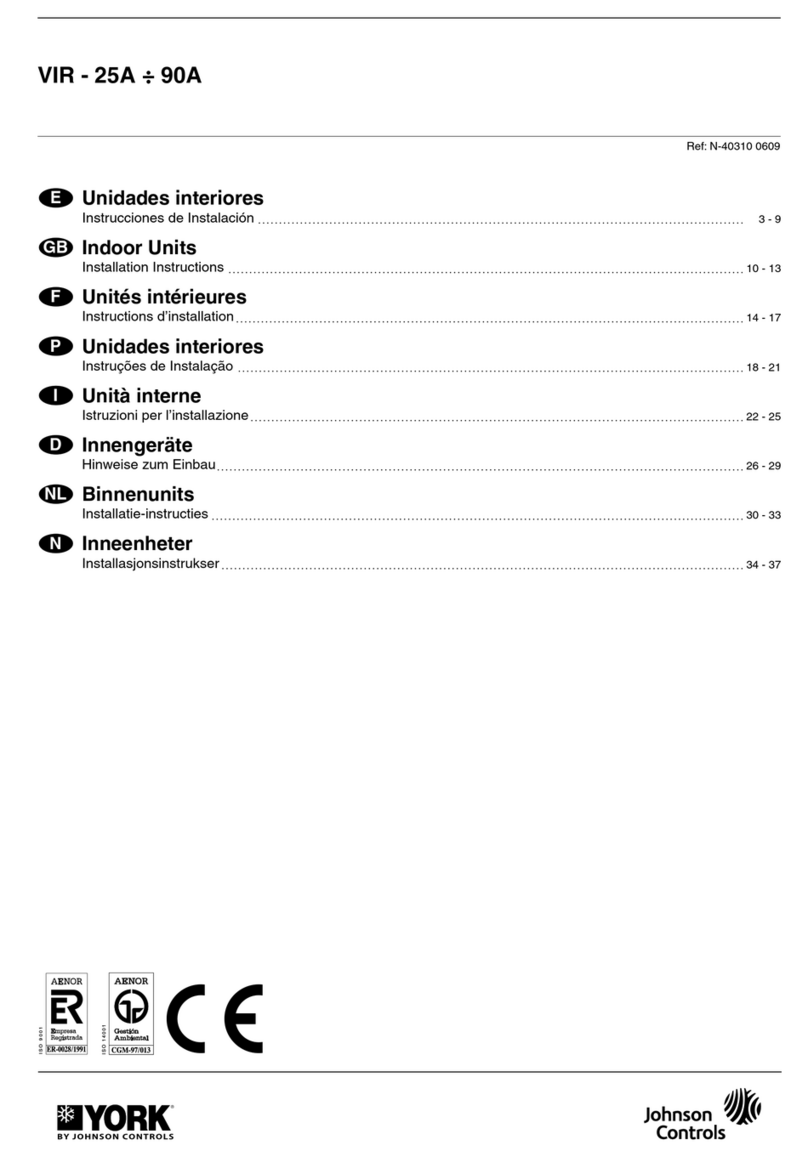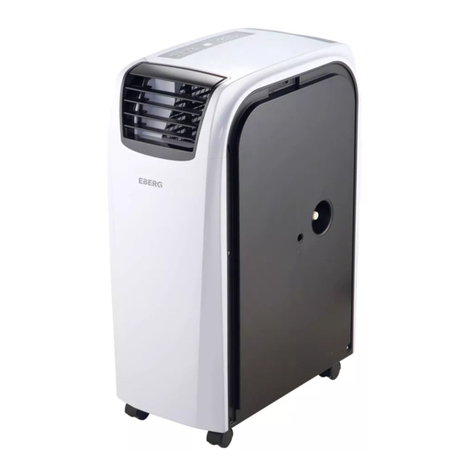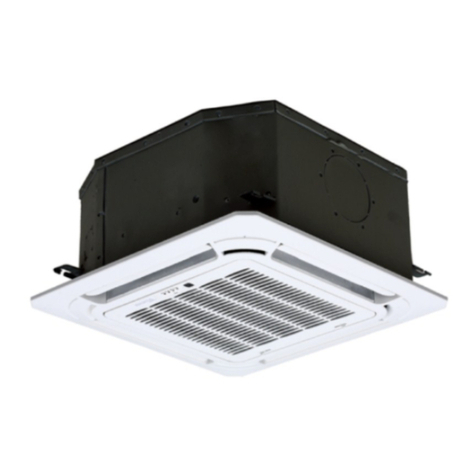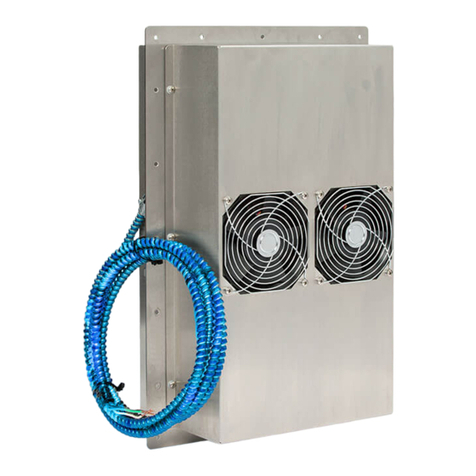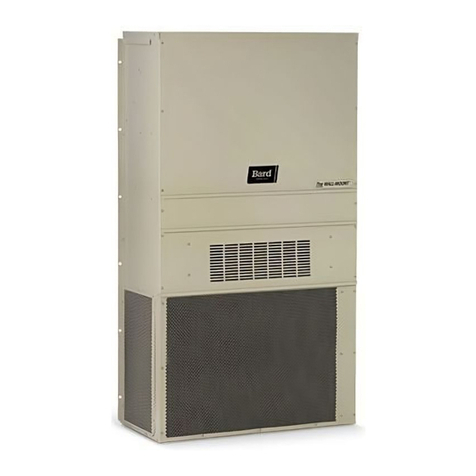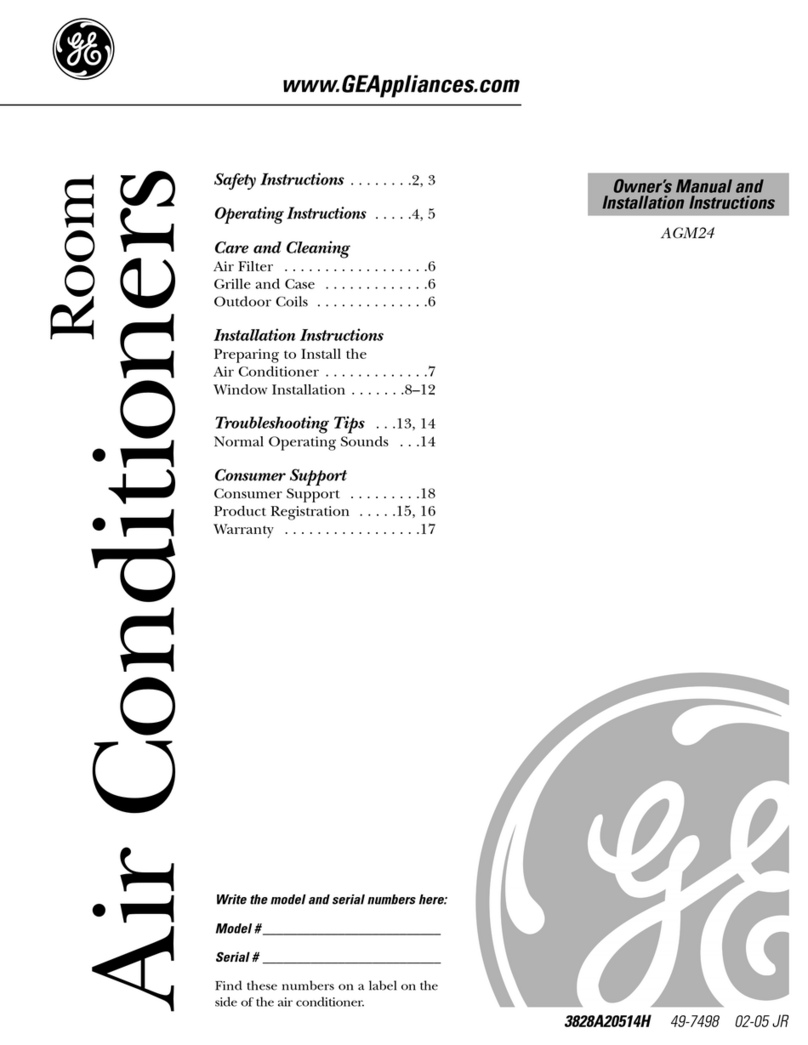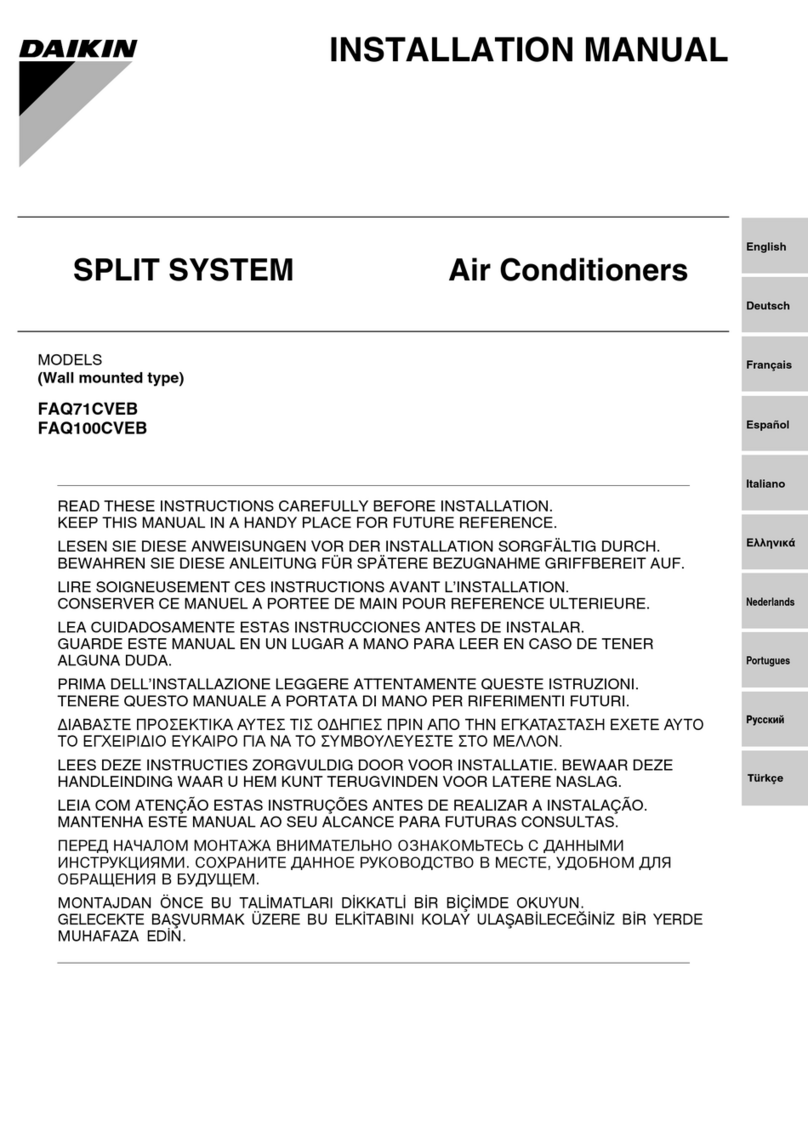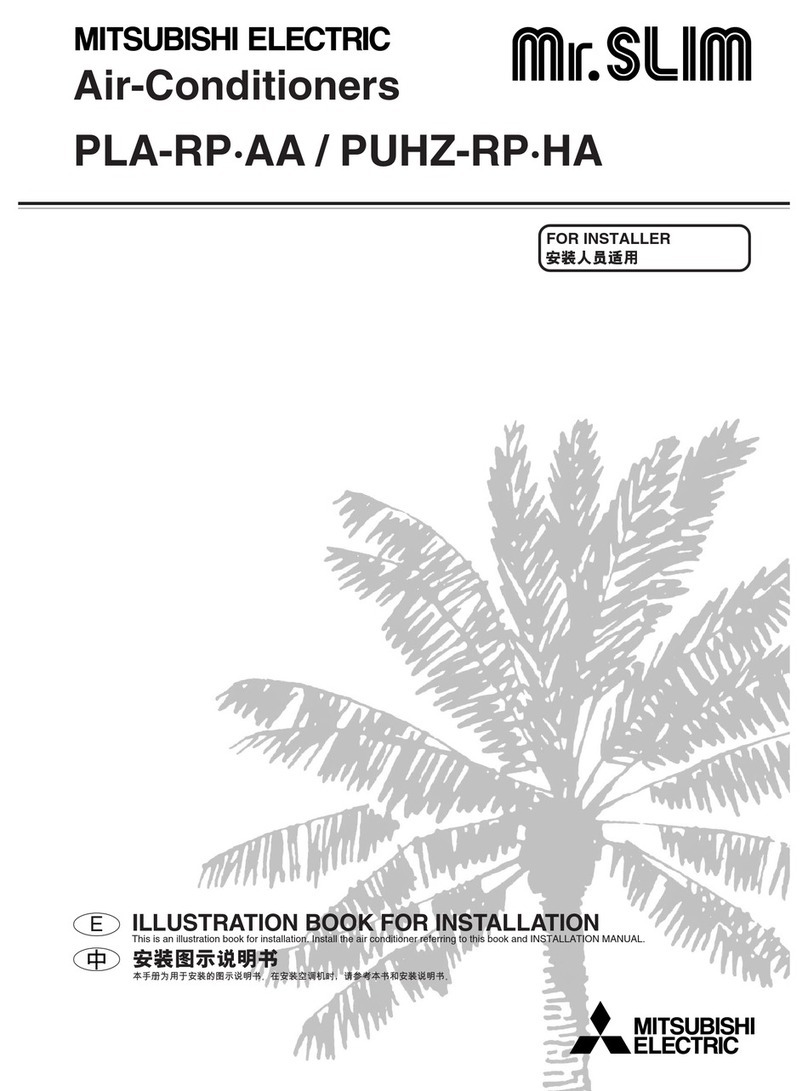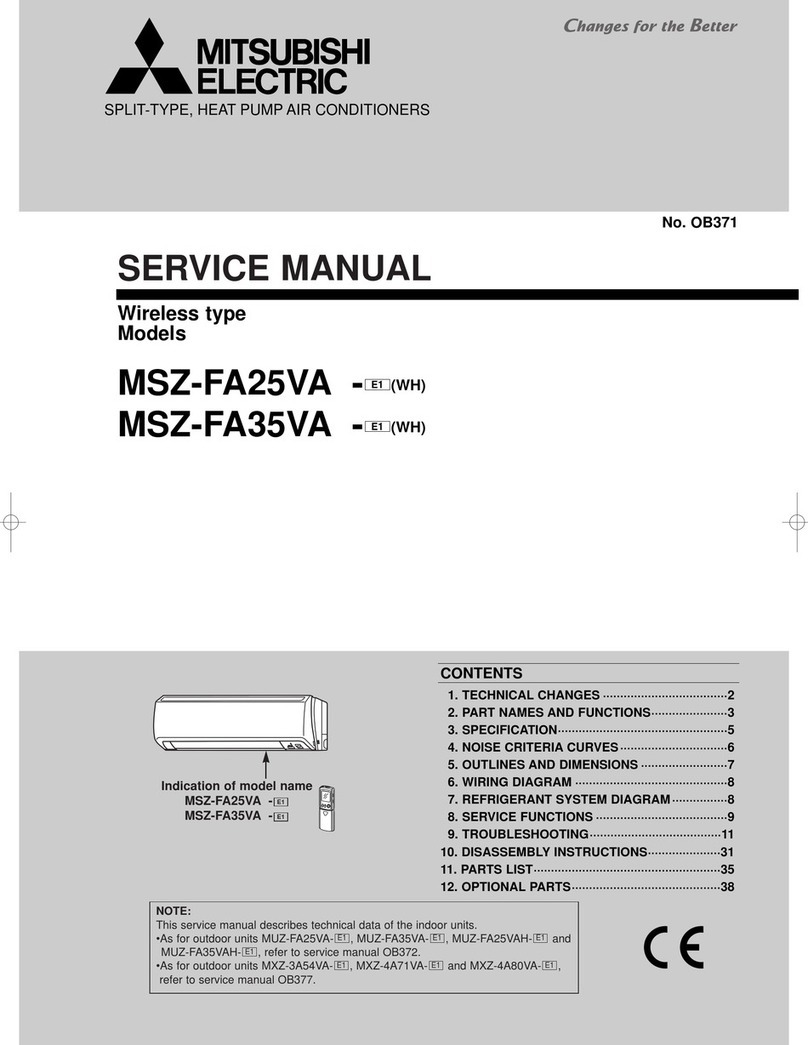
16 17
TCHT011
Check code Abnormal point and detection method Cause Countermeasure
P9
Condenser/evaporator temperature ther-
mistor (TH5)
1The unit is in 3-minute resume protec-
tion mode if short/open of thermistor is
detected. Abnormal if the unit does not
get back to normal within 3 minutes. (The
unit returns to normal operation, if it has
been reset normally.)
2Constantly detected during cooling,
drying, and heating operation (except
defrosting)
Short: 194°F [90:] or more
Open: −40°F [−40:] or less
1Defective thermistor
characteristics
2Contact failure of connector
(CN44) on the indoor controller
board (Insert failure)
3Breaking of wire or contact
failure of thermistor wiring
4Temperature of thermistor is
194°F [90:] or more or −40°F
[−40:] or less caused by
defective refrigerant circuit.
5Defective indoor controller
board
1–3
Check resistance value of thermistor.
For characteristics, refer to (P1) above.
2Check contact failure of connector (CN44)
on the indoor controller board.
Refer to "9-7. TEST POINT DIAGRAM".
Turn the power on and check restart
after inserting connector again.
4
Operate in test run mode and check pipe
<condenser/evaporator> temperature with
outdoor controller circuit board. If pipe
<condenser/evaporator> temperature is
extremely low (in cooling mode) or high (in
heating mode), refrigerant circuit may have
defect.
5
Operate in test run mode and check pipe
<condenser/evaporator> temperature with
outdoor control circuit board. If there is
extreme difference with actual pipe
<condenser/evaporator> temperature, replace
indoor controller board.
There is no abnormality if none of above
comes within the unit.
Turn the power off and on again to operate.
In case of checking pipe temperature
with outdoor controller circuit board,
be sure to connect A-control service
tool (PAC-SK52ST).
PA
Forced compressor stop
(due to water leakage abnormality)
1The unit has a water leakage abnormality
when the following conditions, a) and b),
are satisfied while the above-mentioned
detection is performed.
a) The intake temperature subtracted with
liquid pipe temperature detects to be
less than 14°F [−10°C] for a total of
30 minutes. (When the drain sensor
is detected to be NOT soaked in the
water, the detection record of a) and b)
will be cleared.)
b) Drain float switch detects to be in the
water for more than 15 minutes.
Note:
Once the water leakage abnormality is
detected, abnormality state will not be
released until the main power is reset.
1Drain pump trouble
2Drain defective
· Drain pump clogging
· Drain pipe clogging
3Open circuit of float switch
4
Contact failure of float switch connector
5Dew condensation on float switch
· Drain water descends along
lead wire.
· Drain water is waving due to
filter clogging.
6Extension piping connection dif-
ference at twin, triple or quadru-
ple system
7Miswiring of indoor/outdoor con-
necting at twin, triple or quadru-
ple system
8Room temperature thermistor/
liquid pipe temperature thermis-
tor detection is defective.
1Check the drain pump.
2Check whether water can be drained.
3Check the resistance of the float switch.
4Check the connector contact failure.
5Check the float switch leadwire mounted.
Check the filter clogging.
6Check the piping connection.
7
Check the indoor/outdoor connecting wires.
8Check the room temperature display of
remote controller.
Check the indoor liquid pipe temperature
display of outdoor controller board.
PB (Pb)
Fan motor trouble 1 Defective fan motor
2 Defective indoor controller board
3
Contact failure of fan motor connector
1-3 Refer to "9-6-2. DC fan motor (fan
motor/indoor controller circuit board".
E0
or
E4
Remote controller transmission
error(E0)/signal receiving error(E4)
1Abnormal if main or sub remote con-
troller cannot receive any transmission
normally from indoor unit of refrigerant
address “0” for 3 minutes.
(Check code: E0)
2Abnormal if sub remote controller could
not receive any signal for 2 minutes.
(Check code: E0)
1Abnormal if indoor controller board can
not receive any data normally from
remote controller board or from other
indoor controller board for 3 minutes.
(Check code: E4)
2Indoor controller board cannot receive
any signal from remote controller for 2
minutes. (Check code: E4)
1Contact failure at transmission
wire of remote controller
2All remote controllers are set as
“sub” remote controller. In this
case, E0 is displayed on remote
controller, and E4 is displayed
at LED (LED1, LED2) on the
outdoor controller circuit board.
3Miswiring of remote controller
4Defective transmitting receiving
circuit of remote controller
5Defective transmitting receiving
circuit of indoor controller board
of refrigerant addresses “0”.
6Noise has entered into the
transmission wire of remote
controller.
1
Check disconnection or looseness of indoor unit or
transmission wire of remote controller.
2
Set one of the remote controllers “main”
if there is no problem with the action above.
3Check wiring of remote controller.
• Total wiring length: max. 500 m
(Do not use cable x 3 or more.)
•
The number of connecting indoor units: max. 16 units
• The number of connecting remote con-
troller: max. 2 units
If the cause of trouble is not in above 1–3,
4Diagnose remote controllers.
a) When “OK” is displayed,
Remote controllers have no problem.
Turn the power off, and on again to
check. If abnormality generates again,
replace indoor controller board.
b) When “NG” is displayed,
Replace remote controller.
c)
When “E3” or “ERC” is displayed, noise may be
causing abnormality.
Note:
If the unit is not normal after replacing indoor
controller board in group control, indoor control-
ler board of address “0” may be abnormal.
(
(




















